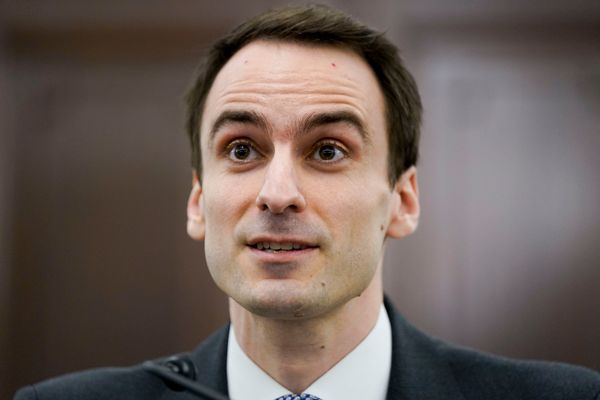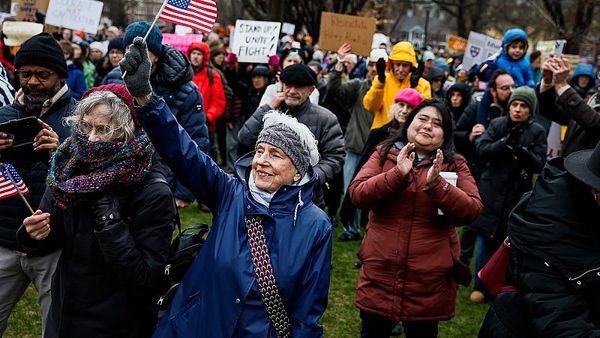

US President Donald Trump‘s been hyping up a so-called ‘Liberation Day’ (for the US, at least?) and that date is now here. On Thursday, he announced a series of economic announcements which will affect countries like Vietnam, India, the UK, Singapore, and yup, even Australia.
You’ve probably seen these headlines splashed across your feed today and it might’ve left you wondering: what’s all this about tariffs and taxes? Didn’t Trump already announce something about this recently? And what does all this mean for Australians?
What did Trump announce?
Before we get into the nitty-gritty, it’s important to note that tariffs are essentially a tax on a good from another country which contributes to a government’s revenue. They’re usually structured as a percentage of the value of the import and can vary based on where the goods are coming from.
Speaking from a White House ceremony on Thursday (local time), Trump launched a list of tariffs (of at least 10 per cent) on goods imported from around 20 countries.
Australia’s actually at the lower end of this list at 10 per cent, compared to other countries like China (34 per cent), South Korea (25 per cent), and Japan (24 per cent).
But two Australian territories seemed to be on the hit list, with Norfolk Island getting a 29 per cent tariff and the Heard and McDonald Islands (which is home to seals and penguins, but no people) getting a 10 per cent tariff. Not gonna lie, it’s not really clear why these spots made the list.
And if all this tariff talk sounds a little familiar, you’re right — back in March, Trump also announced a 25 per cent tariff on Australian steel and aluminium. That’s expected to stay as is.
Some Australian sectors will be also exempt, including pharmaceuticals and critical minerals.
What does this mean for Australian products?
Fair question! Given tariffs are usually imposed to make imported goods more expensive than domestically produced goods, the goal is often to protect local industries (in this case, help US industries), encourage domestic production, or general more revenue for the government. It could also mean US consumers now face higher prices.

So should Australian businesses be concerned? According to My Bui, an economist at financial services company AMP, the direct impact on Australia could be “quite minimal”.
“Additional tariffs on Australian products coming into the US means that our products are getting less competitive compared to maybe other countries or US domestic products. That means they could import less from us. But should we worry about that? I don’t think so,” Bui told PEDESTRIAN.TV.
This, she explained, is because Australia’s total exports to the US stands at just about $24 billion — or some 0.9 per cent of GDP (the total value of everything Australia produces, like goods and services). With the tariffs, this could dip by a modest 0.2 percentage point from less competitive exports.
“It only knocks a very minimal part of our economy,” Bui pointed out.
But that doesn’t mean Australia will be entirely unaffected as these new taxes will likely be a blow to industries that have a lot of business with the US.
Recent figures suggest Australia exports approximately $3.3 billion of meat and $1.6 billion in pharmaceuticals to the US per year.
Other major industries exporting to the US include pearls, metals, and precious stones (around $2 billion), electrical and electronic equiment (roughly $690 million), and aircraft and spacecraft ($630 million).

“On certain industries, [the tariffs] will have a big impact,” Bui said, pointing out that around a third of beef and lamb exports go to the US.
“So to those particular companies, there will be a short term hit if the US stops buying from Australia because of these tariffs. They will certainly see some short term pain.
“But I think the total impact to the everyday Australian will be very minimal. You wouldn’t really feel it because it’s such a small part of the economy.”
Speaking to 9News, Steven Hamilton, assistant professor of economics at George Washington University, previously predicted the direct impact of the tariffs would be “quite small”.
“The thing that we worry about is … the broader fallout across the world, which, you know, if a lot of countries do retaliate there’ll just be a chilling of global trade right?” he said.
“And that’s very bad for Australia when we’re a country, a small country that imports a lot of things.”
Another pressing concern, he suggested, would be if a significant trade shock triggers a US recession, in turn spurring a global recession.
How has Australia responded?
Prime Minister Anthony Albanese was among the first world leaders to respond to Trump’s announcement, stating the tariffs had “no basis in logic”. He said they would disrupt the global economy and probably harm the American people most of all.
“This is not the act of a friend,” he told reporters on Thursday morning.
“The Australian people have every right to view this action by the Trump administration as undermining our free and fair trading relationship, and counter to the shared values that have always been at the heart of our two nations’ long-standing friendship.”
He said Australia would continue to negotiate with the Trump administration and he ruled out imposing any retaliatory tariffs.
According to Bui, this is actually a “really good sign” because it means there won’t be additional taxes on US goods, which range from imported cars to Netflix subscriptions. And this means these prices shouldn’t go up for Aussie consumers.
Instead, Albanese has announced a different five-point plan to immediately deal with the tariffs. Australia will strengthen its anti-dumping regime to stop foreign companies from selling products too cheaply in Australia and Labor will also provide $50 million to affected sectors, particularly bodies like the National Farmers’ Federation, per the AAP.

Australia has already earmarked $20 million for its “buy Australian” campaign, which encourages consumers to buy locally, and the government will prioritise local businesses for procurement and contracts.
Albanese has not ruled out taking the US to the World Trade Organisation (WTO) either, telling reporters Australia is “prepared for all possibilities going forward”.
It wouldn’t be the first time this has happened, given Australia’s opened WTO cases against China over its tariffs on Australian goods like wine and barley and against Canada in 2018 over wine restrictions, as reported by 9News.
Is Australia looking at other markets?
The short answer is: yes! Australia’s trade relationships will likely be diversified as the government signals these new tariffs could lead to new trade deals with other economies.
The government recently signed a new trade agreement with the United Arab Emirates and continues to pursue an agreement with the European Union (EU). Back in 2023, an agreement between Australia and the EU had collapsed with Australia claiming the EU had not offered Australian exporters of beef, sheep, dairy and sugar enough access.
But as reported by ABC News, Trade Minister Don Farrell said the heavy tariffs facing Europe may bring them back to the negotiating table with Australia.
“The world has changed for Europe. Europe is now subject to a much higher tariff into the United States,” he said.
“If they’re sensible, they will make up a better offer on the issues that made the [trade] agreement fall over last time, and we’ll get a free trade agreement with the EU, the largest economy in the world.”

So where do we go from here? Well, the latest announcement could have some impact on the Federal Election, depending on how voters feel about the situation. According to Opposition Leader Peter Dutton, the Coalition “could have achieved a different outcome” with regards to the tariffs. (It’s worth noting this would be the only better deal of all countries globally, given no countries were given an exemption).
Mostly, this is looking like a real wait-and-watch situation, and it could leave global markets nervous about what Trump could announce next. But, as Bui told PEDESTRIAN.TV, this volatility shouldn’t last for too long and things should stabilise by the end of the year.
Fingers crossed!!
The post Explainer: What Trump’s New 10% Tariff On Australian Goods Actually Means For You appeared first on PEDESTRIAN.TV .







